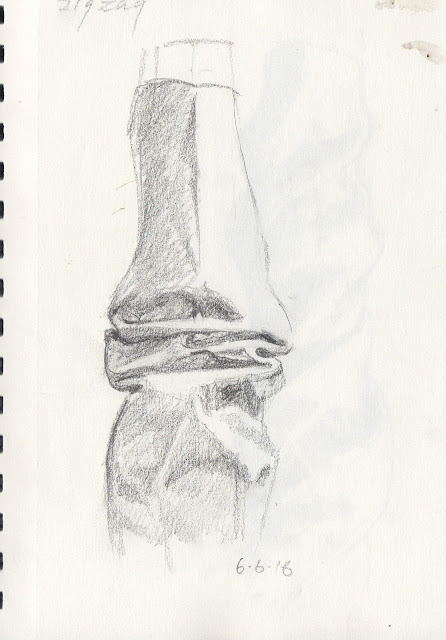A few years back I wrote about learning to draw folds in drapery from one of my masters. Drapery and clothing are difficult. Breaking folds down into a few easily recognized and drawn types is the key to learning how to draw fabric. The ubiquity of folds in clothing, furniture drapery, curtains, and a multitude of other items means if you're going to draw or paint realistically, it's critical to understand folds.
There are six or seven basic folds that fabric repeats: diaper, pipe, half-lock, spiral, drop, and zig-zag fold types are common. Diaper folds have a kind of droopy, swaggy appearance because they occur when a piece of cloth is supported in two or more spots. Drop folds occur where fabric hangs from a single support and drops straight toward the floor. Pipe folds are so-named owing to their resemblance to pipes--a stage curtain is a group of lined-up pipe folds. Half-lock folds are found when a tubular piece of cloth is bent, for example elbows in a shirt. Spiral folds occur in tubes of cloth as well, making spirals around the circumference. And zig-zag folds, again occur often in tubular fabric structures like pants and shirts.
 |
| Diaper Folds |





No comments:
Post a Comment